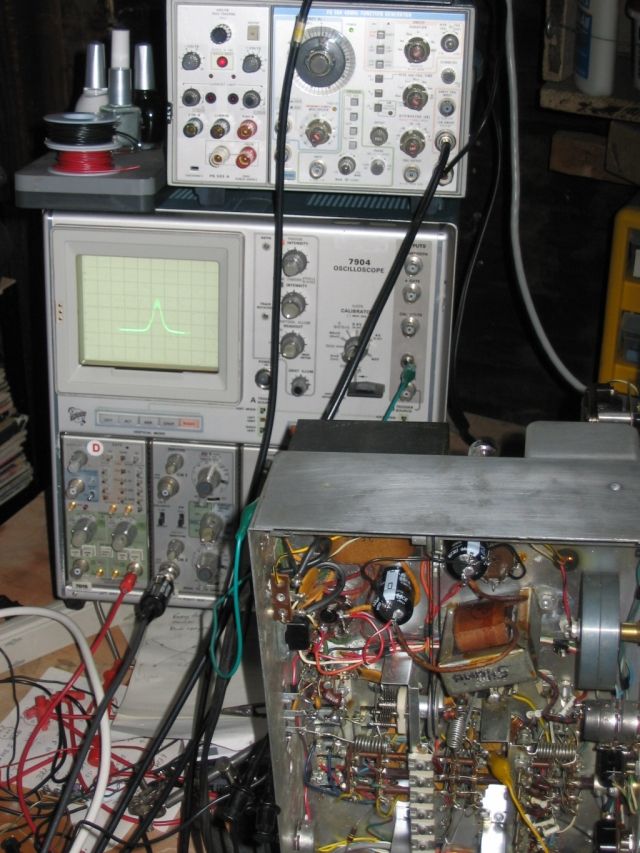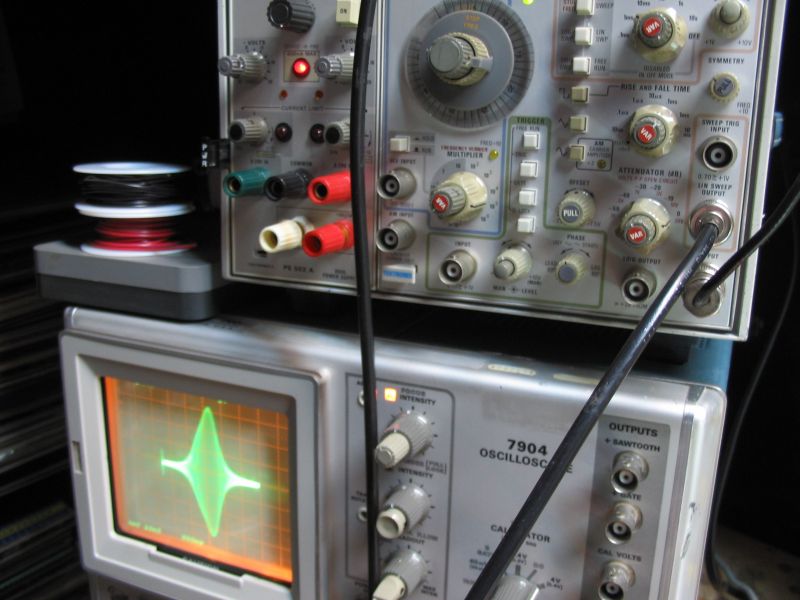IF Alignment of the HQ-110C using sweeps
My sweep generator is a Tektronix FG504. Aligning the IF is great fun with the FG504. For the following instructions, you may like to refer to the schematic of the Hammarlund 110, which is available here. First of all make sure your FG504 is stable ... i.e. when you set it at a frequency it stays there and doesn't fluctuate about a lot. Mine did, and I pinned it down to a noisy X40 trimpot on the Loop board. They are notorious for this.
Here's a photo of my setup. The FG504 is on top of the Tektronix 7904 scope. The HQ110C is in the foreground.

Now set up the FG504 so that it (Lin) sweeps between, say, 400kHz and 500kHz. If you have a frequency counter and set the FG504 to 10 second sweep you can confirm the limits by watching the frequency as it goes slowly up to the high limit from the low. Then set the sweep rate to 1ms.
Connect the output of the FG504 to the input grid (pin 7) of V2 i.e. the input grid of the mixer tube (in the above photo, you can see the yellow croc clip lead attached to this point inside the HQ110C). So now the input grid is seeing a swept frequency. Connect the sweep ramp output of the FG504 to the X-axis of your scope. Now the X position of the scope's beam dot moves across the screen in time with the FG504's sweep rate.
Connect the Y-axis of your scope to the input grid of the next IF tube i.e. pin 7 of V3. So now the vertical position of the beam varies according to how much of the sweep voltage is being passed through the first IF can, which in turn depends on the frequency response of the IF (what we are seeking to optimise): You should see a band and then a peak.

The left hand side of the band you see on the scope corresponds to the 400kHz (or whatever you set as the low value of the sweep) and the high end 500kHz. If the IF can is tuned to 455kHz, then the peak should be around the center of the band.
Now you can tweak the slugs in the IF can (T2) to sharpen the peak. It's very easy to get it nice. I would call it "satisfying" :-)
Once you are satisfied with that IF can, connect the Y scope input to the other side of the next IF can: i.e. pin 1 of V5. Now you are seeing the output from the two IF stages in series, and you can peak the response of the second IF can, T3. Continue like this until you finish after the last IF can.
Well, that's the way I did it, anyway. I suppose you could peak the whole lot in one go, but I suspected this Hammarlund was way off because it had been tinkered with ... and indeed it was. Doing all in one go might have been very frustrating in that situation.